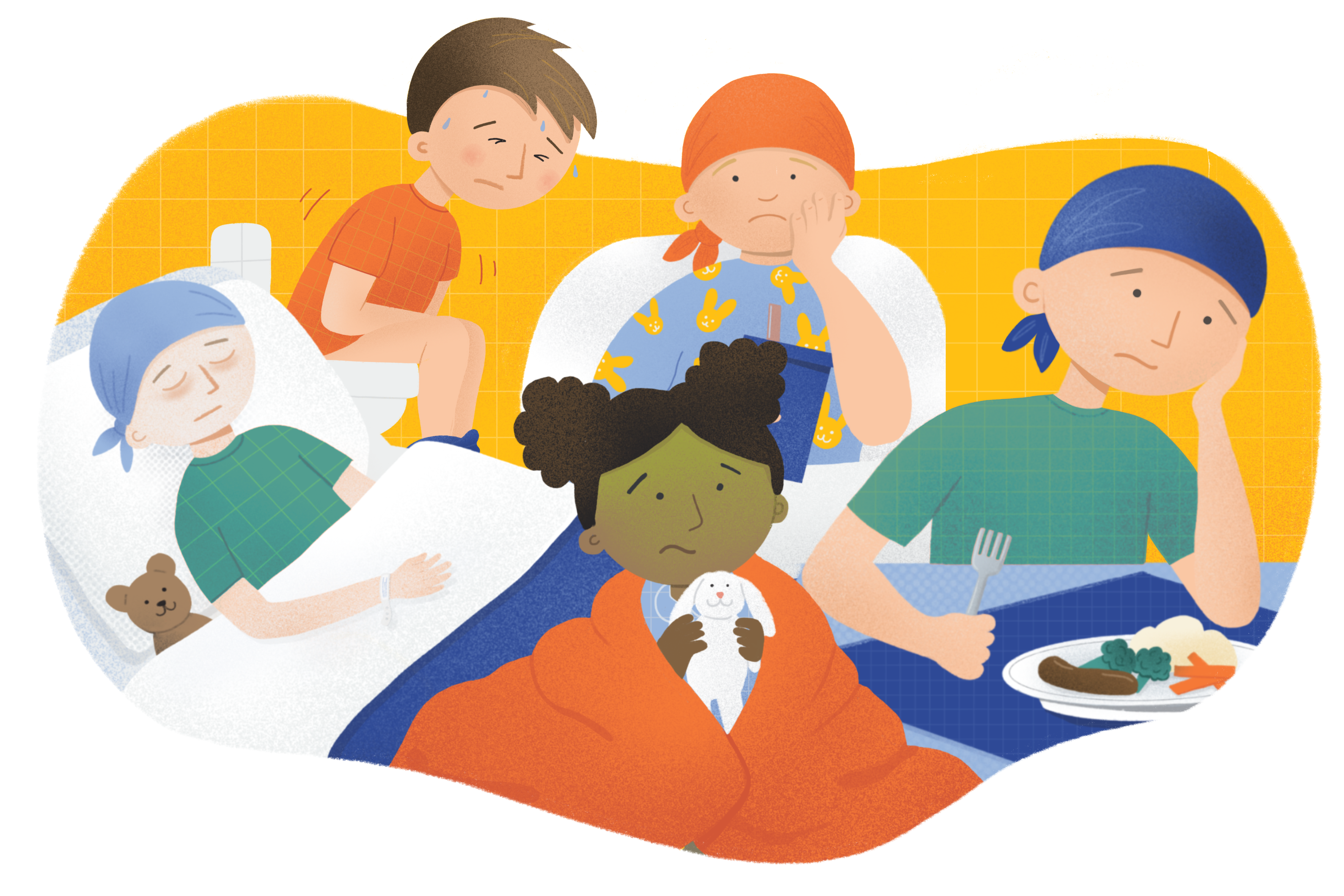Targeted therapies / Immunotherapy for children’s cancers

Targeted therapies
Targeted therapies are drugs that target certain parts of cancer cells that make them different from other cells. In other words, they take advantage of differences between normal cells and cancer cells.
Different targeted therapies work in different ways. Targeted therapies can work to:
- Block or turn off chemical signals that tell the cancer cell to grow and divide
- Change proteins within the cancer cells so the cells die
- Stop new blood vessels growing to feed the cancer cells
- Carry toxins to the cancer cells to kill them
Targeted therapies are not the most common treatment for children. Often they are given along with chemotherapy and radiotherapy as part of a clinical trial. They may be used for some types of leukaemia and solid tumours.
If a targeted therapy might be helpful, your child will have blood tests to see if the cancer cells might respond to the drug.
Immunotherapy
Immunotherapy treatment helps the immune system to work better to fight cancer cells.
Sometimes cancer cells find a way of hiding from the immune system, allowing cancer to develop or spread. Immunotherapy treatments can change special immune cells to help them attack the cancer directly. They can also change other parts of the immune system to make it more difficult for cancer cells to grow or spread.
CAR T-cell therapy
What is CAR T-cell therapy?
CAR T-cell therapy is a new specialised cancer treatment for a specific type of leukaemia. It is available at CHI at Crumlin for children in Ireland.
Who is it for?
CAR-T cell therapy may be suitable for children who have a type of leukaemia called B-cell acute lymphoblastic leukaemia (B-ALL) if:
- The leukaemia has come back (relapsed) following a stem cell or bone marrow transplant
- The leukaemia is refractory to chemotherapy
- The leukaemia has relapsed twice or more
Research is ongoing to extend this treatment to other cancers.
How does it work?
CAR-T cell therapy is a type of immunotherapy. This means it works by using the power of the immune system to fight cancer. CAR-T therapy harnesses the patient’s own immune system. This is different to a bone marrow transplant, where donor cells provide the immune function.
To understand CAR-T cell therapy, it helps to understand what T cells do. T cells are white blood cells that play an important part in fighting infections and diseases, including cancer.
T cells travel around the body to find and kill abnormal cells, such as cancer cells. When they encounter a new infection or disease, the body makes T cells to fight that specific infection or disease. It then keeps some in reserve so that when there is infection again the body can recognise it and attack it faster and more effectively. Sometimes cancer cells ‘hide’ from the immune system, so the T cells can’t recognise and attack them. CAR-T cell therapy involves taking the patient’s own T cells, then changing them in a laboratory so that they are better equipped to seek out and attack these cancer cells.
Main steps in the CAR T-cell therapy process
Collecting T cells (apheresis)
Apheresis is the procedure to remove T cells from the blood. Your child’s central line will be used to take blood. The blood from your child passes through a machine, which removes and collects T cells. This takes a few hours. Usually your child will go home afterwards – they shouldn’t need to stay in hospital.
Reprogramming and growing T cells
The collected T cells are frozen and sent to a special laboratory for reprogramming. In the lab, they change the T cells to recognise and target the cancer cells. The T cell is now a CAR-T cell. CAR stands for chimeric antigen receptor.
These changed T cells grow and multiply in the lab so there will be enough to target the cancer cells. Before they are used, the CAR-T cells are tested for their quality and quantity to make sure the process has worked.
Lymphodepletion chemotherapy
Your child will stay in hospital for the next steps of the treatment. First they will have tests to check they are well enough for treatment.
Then they will have chemotherapy over a few days. This is called lymphodepletion chemotherapy. The chemotherapy prepares the body for the CAR-T cells by reducing the number of white cells, which includes any cancer cells, so the new cells can take over.
Infusion of CAR-T cells
The CAR-T cells are thawed and given through the central line into the bloodstream. This only takes a few minutes.
The CAR-T cells now flow through the body and target the cancer cells.
Recovery
Your child will stay in hospital for at least 14 days after the infusion. Your child will be closely monitored for side effects. The doctors and nurses will take care of them until they are well enough to go home.
Follow-up
Your child will go back to the hospital for follow-up appointments, so that their medial team can check their health and how well the treatment has worked. Follow up will include blood tests, physical examinations and sometimes bone marrow aspirates and lumbar punctures. Your medical team will tell you how often your child will need to come for follow-up.
CHI Crumlin's CAR-T cell therapy video*
* Thank you to CHI Crumlin for granting permission to use their video.
If you need support or more information, contact the CAR-T cell team at CHI Crumlin, or you can get in touch with our Children’s Cancer Nurse by calling our Support Line on Freephone 1800 200 700.
For more information
Phone
1800 200 700



